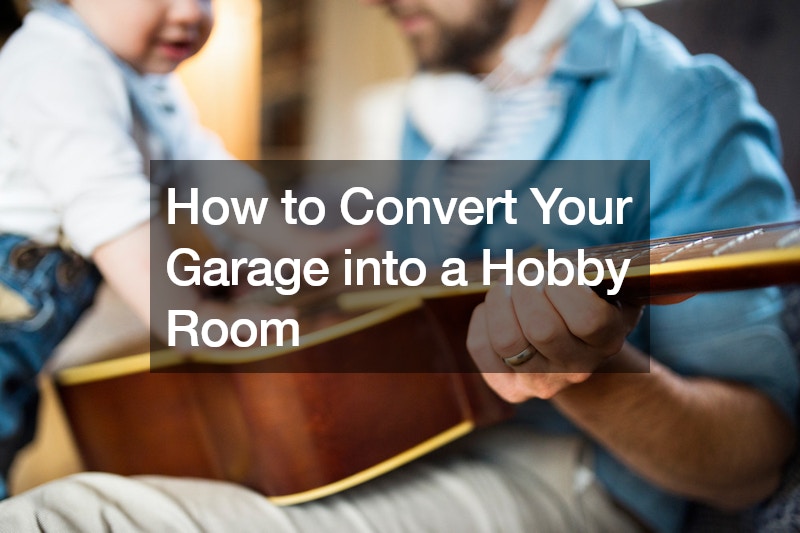Converting your garage into a hobby room is a fantastic way to maximize your space and create a dedicated area for your favorite activities. Whether you’re into crafts, woodworking, or any other hobby, a well-insulated and soundproofed garage can become your perfect retreat. Here’s a step-by-step guide to help you transform your garage into a cozy, functional hobby room.
Plan Your Space
Before you start any physical work, take some time to plan your space. Think about the layout and determine where your workstations, storage, and seating will be located.
Adequate lighting is essential; natural light is ideal, so consider adding windows or making use of existing ones. Additionally, plan for sufficient electrical outlets to power your tools and gadgets.
Budgeting for Improvements
Creating a budget is crucial for a successful conversion project. Insulating the walls and ceiling, depending on the material, can cost between $500 and $1,500. For the garage door, multi-purpose insulation wrap costs around $50 to $100, with additional costs for double-sided tape and spray adhesive amounting to $20 to $40. Acoustic foam panels can range from $50 to $300, depending on the quantity and quality, with a standard two-car garage costing around $200. Sealing gaps with caulking and weatherstripping materials typically costs between $30 and $100.
Lighting upgrades can range from $100 to $500, while adding extra power outlets or upgrading the electrical panel can cost between $200 and $1,000. Portable heaters or fans can range from $50 to $300 each. By considering these factors, you can create a realistic budget that covers all necessary improvements.
Cost-Effective Improvements
Some modifications give more value for your money. Adding insulation to your garage door is a cost-effective way to significantly improve temperature regulation for around $100. Acoustic foam provides excellent value by reducing noise and enhancing comfort, with around $200 for quality foam panels making your hobby room much more enjoyable. Simple caulking and weatherstripping can be very inexpensive, around $50, yet provide substantial improvements in soundproofing and insulation efficiency.
To save on costs, consider doing the insulation and soundproofing work yourself. Many materials are easy to handle with basic DIY skills. Furnish your hobby room with second-hand tables, chairs, and storage units to keep costs low without sacrificing functionality. Use LED strip lights or affordable track lighting to enhance visibility without breaking the bank.
Clean and Prep the Space
Before installing insulation and soundproofing materials, clean the garage thoroughly. Remove dust, debris, and any residues from the walls and doors. A clean surface ensures better adhesion for your materials.
Install Insulation and Soundproofing Materials
Use strong double-sided tape to attach the insulation wrap to the garage door panels. This method allows for easy removal if you decide to change the setup later. Cut the foam panels to fit the door and walls using a sharp knife or scissors for cleaner cuts. Use spray adhesive to attach the foam panels to the surfaces, ensuring the adhesive is strong enough to hold the foam securely.
Test for Noise Reduction
After installing the insulation and soundproofing materials, test the noise levels inside and outside the garage. Run any loud equipment you plan to use and measure the noise reduction. Aim for a significant drop in decibels to ensure a quieter environment.
Organize and Furnish
Once the insulation and soundproofing are complete, set up your hobby room. Install sturdy tables and workbenches for your projects. Add shelves, cabinets, and pegboards to keep your tools and materials organized. Include comfortable seating to make your hobby room inviting.
Maintain Comfort
To keep your hobby room comfortable year-round, consider additional heating or cooling options, such as portable heaters or fans. Regularly check the insulation and soundproofing materials for wear and tear and replace them as needed.
Conclusion
Converting your garage into a hobby room is a rewarding project that can enhance your home’s functionality and provide a dedicated space for your passions. By properly insulating and soundproofing your garage, you can create a comfortable, quiet, and efficient workspace. Remember to consult your garage door company regarding weight limits and follow these steps to transform your garage into the perfect hobby haven. With careful planning and budgeting, you can make the most out of your garage conversion and enjoy your new space for years to come.
.





